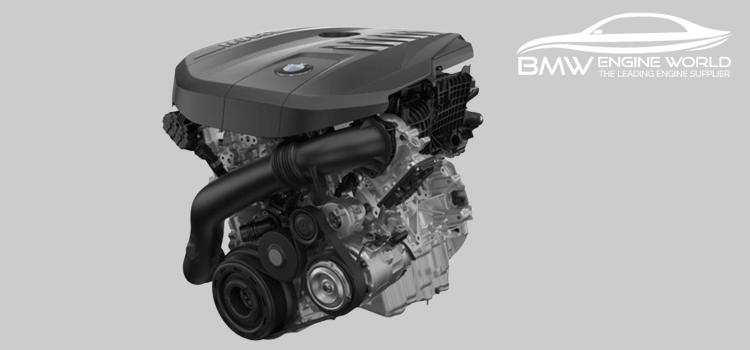What Are The Key Design Features That Distinguish The BMW B58 Engine From Its Predecessor, The N55?

Introduction
BMW has long been recognized for its engineering prowess, particularly in developing high-performance engines. Two such engines, the N55 and its successor, the B58, have set benchmarks in their respective eras. Introduced in 2009, the N55 was celebrated for its balance of performance and efficiency. However, in 2015, BMW introduced the BMW B58 engine, which brought numerous advancements and refinements. We delves into the key design features that distinguish the B58 engine from the N55, highlighting the innovations and improvements that make the B58 a significant evolution in BMW’s inline-six engine lineage.
Engine Block and Materials
One of the most notable differences between the B58 and N55 engines lies in the construction of the engine block. The N55 uses an aluminum block with cast iron cylinder liners, which helped reduce weight compared to the all-iron blocks used in previous generations. However, the B58 takes this a step further by utilizing a closed-deck aluminum block. This design provides greater rigidity and allows for higher boost pressures, contributing to improved durability and performance. Additionally, the use of a closed-deck design in the B58 enhances the engine’s thermal efficiency, a critical factor in achieving better performance and fuel economy.
Turbocharging System
Turbocharging is a critical aspect of both the N55 and B58 engines, but BMW has made significant advancements in the B58’s turbocharging system. The N55 features a single twin-scroll turbocharger, which was an improvement over the twin-turbo setup of the earlier N54. The twin-scroll design helped reduce turbo lag and improved power delivery. The B58, while retaining the single turbo approach, introduces a larger, single twin-scroll turbocharger. This new turbocharger is integrated into the exhaust manifold, reducing the distance the exhaust gases need to travel and thus improving response time. The result is a more efficient turbocharging system that delivers better low-end torque and overall performance.
Cooling System Enhancements
Effective cooling is crucial for maintaining engine performance and longevity, especially in high-performance engines. The B58 features a more advanced cooling system compared to the N55. The B58 employs a modular, integrated cooling system with a main radiator, additional radiators for the turbocharger and intercooler, and a dedicated electric coolant pump for the turbocharger. This comprehensive cooling setup helps maintain optimal operating temperatures, even under high loads, ensuring consistent performance and preventing overheating. The N55, while efficient, does not offer the same level of sophistication in its cooling system, making the B58 more adept at handling thermal stress.
Fuel Injection Technology
Fuel injection technology has seen significant advancements from the N55 to the B58. The N55 uses a direct fuel injection system, which was advanced at its time of introduction, offering better fuel atomization and combustion efficiency compared to port injection systems. However, the B58 takes this further with a combination of high-pressure direct injection and low-pressure port injection. This dual injection system allows for more precise control of fuel delivery, optimizing performance and efficiency across a wider range of operating conditions. The result is improved power output, better fuel economy, and reduced emissions.
Variable Valve Timing and Lift
Both the N55 and B58 engines feature BMW’s Valvetronic variable valve timing and lift technology, but the B58 incorporates several enhancements that improve performance and efficiency. The B58’s Valvetronic system offers more precise control over valve timing and lift, allowing for better optimization of the air-fuel mixture entering the cylinders. This leads to improved combustion efficiency, resulting in higher power output and better fuel economy. Additionally, the B58 features Double-VANOS, which adjusts the timing of both the intake and exhaust camshafts, further enhancing the engine’s responsiveness and efficiency across different RPM ranges.
Crankshaft and Internal Components
The internal components of the B58 engine have been significantly upgraded compared to the N55. The B58 features a forged steel crankshaft, which offers greater strength and durability compared to the cast iron crankshaft used in the N55. This upgrade allows the B58 to handle higher stress and torque levels without compromising reliability. Additionally, the B58 uses stronger connecting rods and pistons, designed to withstand the increased pressures generated by the more powerful turbocharging system. These improvements contribute to the overall robustness and longevity of the B58 engine, making it more suitable for high-performance applications.
Emissions Control and Environmental Impact
Reducing emissions and improving environmental performance are critical considerations in modern BMW engine design. The B58 engine incorporates several advancements over the N55 in this regard. The B58 features an integrated particulate filter, which helps reduce soot and particulate emissions, a common challenge in direct-injection engines. Additionally, the B58’s advanced fuel injection and combustion control systems contribute to lower nitrogen oxide (NOx) emissions. The engine is also designed to meet stricter Euro 6 emissions standards, reflecting BMW’s commitment to environmental sustainability. In contrast, while the N55 was advanced for its time, it does not offer the same level of emissions control as the B58.
Overall Performance and Efficiency
When comparing the overall performance and efficiency of the B58 and N55 engines, the B58 clearly stands out as the more advanced powerplant. The combination of a more rigid engine block, a sophisticated turbocharging system, enhanced cooling, advanced fuel injection, and precise valve control all contribute to the B58’s superior performance. The B58 delivers higher horsepower and torque figures compared to the N55, along with improved fuel efficiency. These advancements make the B58 not only more powerful but also more economical and environmentally friendly, offering a well-rounded package that enhances the driving experience.
Conclusion
The evolution from the BMW N55 to the B58 engine represents a significant leap forward in automotive engineering. Each key design feature of the B58—from the robust closed-deck block and advanced turbocharging system to the sophisticated cooling and dual fuel injection—illustrates BMW’s commitment to innovation and performance. These enhancements result in an engine that is more powerful, efficient, and durable than its predecessor. As BMW continues to push the boundaries of automotive technology, the B58 stands as a testament to the brand’s dedication to delivering high-performance, reliable, and environmentally conscious engines.


